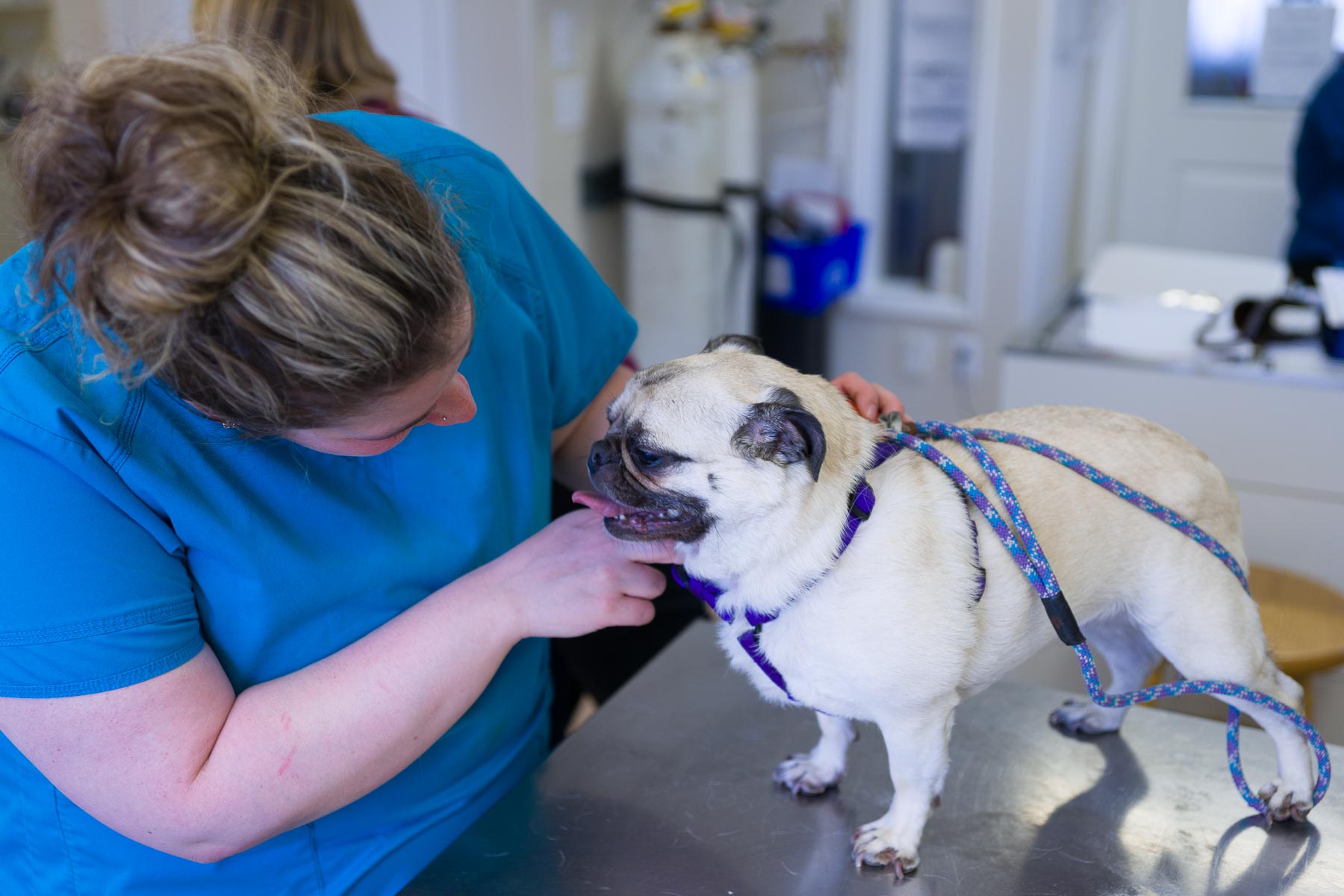
Imagine what your mouth would feel like if you never brushed your teeth or went to the dentist! For many dogs and cats, this is a painful reality. According to the American Veterinary Dental Society, more than 80% of dogs and 70% of cats have dental disease by the age of 3. Dental (or periodontal) disease is the most frequently diagnosed health problem in pets.
Common signs of dental disease include:
- Yellow or brown buildup (tartar) on the teeth
- Red, swollen, or bleeding gums
- Bad breath
- Excessive drooling
- Changes in eating or chewing habits
- Pawing at the face
- Loose or missing teeth
Even if your dog or cat doesn’t have these symptoms, we recommend that you have a veterinarian evaluate your pet’s dental health at least once a year. Bacteria and food debris accumulate around the teeth and, if left unchecked, will lead to deterioration of the soft tissue and bone surrounding the teeth. This decay can result in pain, irreversible periodontal disease, and tooth loss for your pet. Dental disease can also affect other organs in the body as bacteria in the mouth can enter the bloodstream and cause infections in the kidneys, liver, lungs, and heart. A physical exam combined with appropriate labwork can determine if infection in the mouth has spread.
Schedule your pet’s dental exam today! For pets in need of routine care, we can show you how to brush your pet’s teeth, and recommend foods & treats that will help combat plaque and tartar buildup. For those pets already experiencing notable periodontal disease or oral pathology, a surgical dental procedure may be recommended to address those concerns.
Dental surgery can be performed at both of our practice locations, but due to the specialized equipment and staff required, only 1 dental surgery is scheduled per available day. Once under general anaesthetic, your pet will have x-rays taken of their mouth, as well as have a more in-depth oral examination (ie. gingival probing) than can be completed on an awake pet. Based on the veterinarian’s findings, unhealthy or non-viable teeth may be extracted. Masses in a mouth may be biopsied or removed. The remaining healthy teeth will be cleaned of tartar, polished, and the mouth will be rinsed. In the interest of pain control and reduced anaesthesia for our patients, the mouth is locally blocked (“frozen”) for the duration of their procedure.
For more information on oral health, and for a list of proven products for use in your pet’s at-home oral care, please visit the Veterinary Oral Health Council (VOHC) website.
